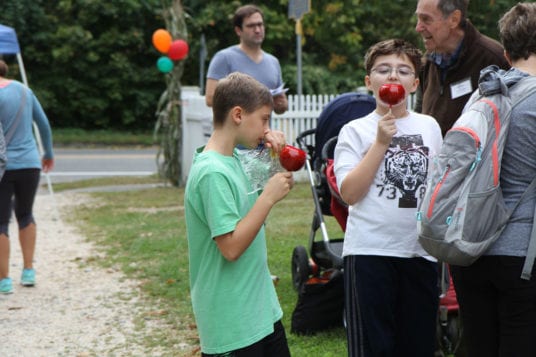By David Dunaief, M.D.
The more we seem to know about obesity as a chronic disease, classified this way first by the American Medical Association, the worse we in the medical community seem to have done to prevent and treat it and its complications. There are more obese people now than those who are overweight (1). Why would it be so difficult to treat a disease that has a simple solution, lose weight? How hard could that be, right?
If it were so simple to lose weight, we would not have an epidemic on our hands. We compete with internal and external forces, including forces from the food industry working to influence us every day. What is the problem with being obese? The issue with weight is not about vanity. The issue is that obesity creates medical complications and is second only to smoking in causing premature deaths (2). The research implies that weight loss in obese patients reduces the risk of death (3).
Life-threatening complications from obesity include multiple cancers, heart disease, stroke, diabetes, and nonalcoholic fatty liver disease. Is there something we can do about it? Simply, yes. Weight loss may have to do, at least in part, with the timing of when we eat. Also, exercise may help us increase lean muscle mass while decreasing body fat. Diet, of course, is important. A Mediterranean diet has only been shown to help with weight loss, not contribute to weight gain. There is too much doom and gloom about obesity. We need to focus on possible solutions first! Let’s look at the research.
Timing! Timing! Timing!
We have always been told not to eat late at night. Is there some truth to this, or is it an old wives’ tale? Well, it may be partially true; however, it may have more to do with how many hours we have access to food during a 24-hour period. Let me explain. In a recent study involving mice, results showed that those mice restricted to a 12-hour food consumption period in a 24-hour day were thinner than those allowed to eat anytime during the 24 hours. They may also have had reversal of metabolic disease, such as type 2 diabetes, in those mice who had pre-existing disease (4). Those that had access 24/7 became more obese and chronically ill. It did not matter which diet the mice ate.
Timing/access to food was the most important factor over the 38-week study. In fact, those that were initially given 24-hour access and then switched to the 12-hour limited access actually lost weight! Surprisingly, those that were limited to 12-hour food access could even cheat occasionally on the weekends, and it did not have a negative impact on their results. There were four diet groups — high fat and sucrose (a type of sugar), high fat, high fructose and typical diet. Of course, we are not mice. However, these are encouraging results.
Restricting eating to 12 consecutive hours during the day doesn’t seem like too much of a hardship. Now we need a randomized controlled trial in humans. In the meantime, I would suggest implementing these findings, even though we are not mice. There is no downside. In a previous study by the same research group, results showed that mice who had eight hours of access to food during a 24-hour period also showed considerably better results than those that had 24-hour access (5). Both mice groups were fed high-fat diets. The only difference was that one group was time restricted to eight hours of food exposure. The food-restricted mice saw an increase in prevention of metabolic parameters including diabetes, obesity and liver disease. The results also showed that restricting time to food decreased inflammation and improved energy expenditure. However, eight hours is more difficult to manage than 12 hours of access to food in a 24-hour cycle.
Mediterranean-type diet to the rescue
The Mediterranean diet has been valuable for a number of different chronic diseases, and obesity is no exception. In a meta-analysis (involving 16 randomized controlled trials, the gold standard of studies), the results showed that the Mediterranean-type diet was significantly better at helping patients lose weight when compared to a control diet (6). The longer the participants were on a Mediterranean-type diet, the greater the weight loss. Thus, this type of diet seems to get better with time. The meta-analysis involved over 3,000 participants. In none of the studies did any group on the Mediterranean diet gain weight.
Cancer is a weighty topic
We are always looking for cures for cancer. It is one of the more prevalent conglomerations of diseases. What might exacerbate cancer risk? If you guessed obesity, you would be right. Interestingly, it may have to do with duration of obesity that increases risk for cancer. This applies to multiple types of cancer. In a recent study, results showed that eight more cancers are associated with being overweight and obese, according to the International Agency for Research on Cancer (IARC), including mostly gastrointestinal cancers (liver, gallbladder, stomach and pancreas), as well as meningioma, thyroid, multiple myeloma and ovarian cancers (7). As we know, ovarian and pancreatic cancers tend to present with symptoms in the later stages and so are more lethal. This is added to the five cancers already known to be associated with obesity: esophageal, colorectal, uterine and post-menopausal breast cancers, plus renal cell carcinoma (kidney cancer).
The reasons for this association may have to do with the dysregulation of sex hormone breakdown and increased inflammation associated with body fat. According to the IARC, losing weight may be a way to reduce cancer risk, although studies that have shown this effect have been animal studies. However, this is pretty good motivation to lose weight. In another study, the results show the longer the duration of obesity, the greater the risk of developing cancer (8). According to the study results, for every 10 years of being overweight/obese, there was an additional 7 percent increase in the risk for several different cancers. The study involved over 70,000 postmenopausal women for a mean duration of 12.6 years.
Finally, the beverage industry’s black eye
A recent scientific review found that Coca-Cola and PepsiCo have spent millions and millions of dollars trying to influence medical organizations and public health institutions. They have put these groups in precarious situations by offering them money to help fund their organizations’ work, while asking them to back down on pressing issues such as a soda tax (9). The American Academy of Nutrition and Dietetics is, unfortunately, an example. However, the Institute of Medicine (IOM) has said that research shows soda has a strong association with the obesity epidemic (10). The moral of the story: We can and need to do a better job treating obese patients. One possible way to lose weight may be to restrict our access to food to the same 12-hour period each 24-hour cycle. Also, a Mediterranean diet has only been shown to cause weight loss, not weight gain.
References: (1) cdc.gov. (2) Lancet. online July 13, 2016. (3) Obes Rev. 2007;8(6):503-513. (4) Cell Metab. 2014;20(6): 991–1005. (5) Cell Metab. 2012;15(6):848-860. (6) Metab Syndr Relat Disord. 2011 Feb;9(1):1-12. (7) N Engl J Med. 2016;375:794-798. (8) PLoS Med. online August 16, 2016. (9) Am J Prev Med. online October 10, 2016. (10) hsph.harvard.edu/nutritionsource/sugary-drinks-fact-sheet.
Dr. Dunaief is a speaker, author and local lifestyle medicine physician focusing on the integration of medicine, nutrition, fitness and stress management. For further information, visit www.medicalcompassmd.com or consult your personal physician.











































